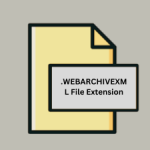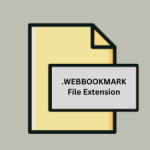.HTACCESS File Extension

What is an HTACCESS file?
The .htaccess file is a configuration file used by Apache-based web servers to control directory-specific settings. It allows administrators to manage various server directives on a per-directory basis, influencing the behavior of the server for that directory and its subdirectories.
More Information.
- History: The
.htaccessfile has been a part of Apache since version 1.3, released in 1998. It was created to allow webmasters and developers to control server behavior on a per-directory basis without requiring root access to the main server configuration files. - Initial Purpose: Initially,
.htaccessfiles were used to handle directory-level configuration changes, such as URL rewriting, access control, and authentication. Over time, its use expanded to include additional features such as custom error pages and caching.
Origin Of This File.
The .htaccess file is a feature of the Apache HTTP Server, one of the most widely used web server software. It was introduced to provide a method for making configuration changes without needing to modify the main server configuration files, which are often managed by server administrators.
File Structure Technical Specification.
- File Structure: The
.htaccessfile is a plain text file with no file extension. It contains directives and configuration settings that affect the directory in which it is placed and its subdirectories. - Technical Specification: The file uses a simple syntax where each directive is specified on a new line. Common directives include
RewriteEngine,AuthType,ErrorDocument, andOptions. The file’s syntax and directives are specific to Apache, and incorrect settings can lead to server errors.
How to Convert the File?
Windows:
- To Another Format: If you need to convert
.htaccessfiles to another text format (like.txt), you can simply change the file extension through Windows Explorer or using a text editor. - Preserving Line Endings: Windows uses CRLF (Carriage Return + Line Feed) for line endings. If the file needs to be compatible with UNIX-based systems (Linux/Mac), ensure the line endings are converted to LF (Line Feed) only, which can be done using text editors like Notepad++ (Edit > EOL Conversion > Unix (LF)).
Linux:
- To Another Format: Similarly, you can rename
.htaccessfiles to.txtor any other format if needed. Linux systems use LF for line endings. - Handling Line Endings: Linux uses LF for line endings, which is generally compatible with macOS and UNIX systems. If you’re sharing files with Windows users, ensure that the file is properly formatted (e.g., using tools like
dos2unixif needed).
Mac:
- To Another Format: You can use macOS text editors to rename or convert
.htaccessfiles. For example, save the file as.txtif needed. - Handling Line Endings: macOS uses LF for line endings, which is compatible with Linux and UNIX systems.
Android:
- To Another Format: On Android, use file manager apps or text editors that support file renaming to change the file extension if necessary.
- Handling Line Endings: Android generally uses LF for line endings, similar to Linux and macOS. When transferring files to other systems, ensure compatibility.
iOS:
- To Another Format: Use text editing apps on iOS to rename or convert
.htaccessfiles to other formats if needed. - Handling Line Endings: iOS uses LF for line endings, so files should generally be compatible with Linux and macOS systems.
Others:
- To Another Format: On other platforms or devices, use any text editor to rename or change the file extension as needed.
- Handling Line Endings: Ensure that the file uses appropriate line endings for the target system. Most modern text editors handle line ending conversions, but be cautious when transferring between Windows and UNIX-based systems.
Advantages And Disadvantages.
- Advantages:
- Flexibility: Allows for directory-specific configuration changes without server-wide modifications.
- Ease of Use: Simple text file format makes it easy to edit.
- Granularity: Provides control over specific directories and subdirectories, enhancing security and functionality.
- Disadvantages:
- Performance Impact: Overuse of
.htaccessfiles can degrade server performance because Apache must check for.htaccessfiles in every directory level. - Complexity: Misconfiguration can lead to server errors or unintended access issues.
- Security Risks: Improper settings can expose vulnerabilities if not managed correctly.
- Performance Impact: Overuse of
How to Open HTACCESS?
Open In Windows
.htaccess files can be opened and edited with any text editor on Windows, such as Notepad, Notepad++, or Visual Studio Code.
Open In Linux
On Linux, .htaccess files can be opened and edited using text editors like nano, vim, or graphical editors such as Gedit.
Open In MAC
On macOS, .htaccess files can be edited with text editors like TextEdit, Sublime Text, or VSCode.
Open In Android
On Android, .htaccess files can be opened and edited using file manager apps with text editing capabilities, such as QuickEdit or Jota Text Editor.
Open In IOS
On iOS, .htaccess files can be opened and edited with apps like Textastic Code Editor or Buffer Editor.
Open in Others
.htaccess files are generally platform-independent due to their plain text nature and can be edited on any system with a suitable text editor.













